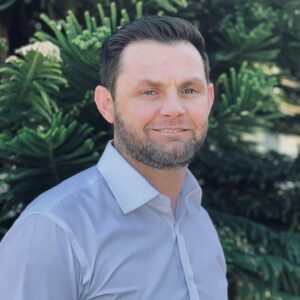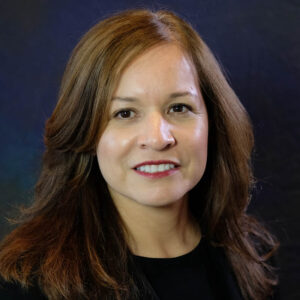Impact Sciences is proud to have sponsored the 2018 Walk N’ Roll Air Quality Art Contest hosted by the Tulare County Association of Governments (TCAG). The contest challenged local students (K-12) to share their creative ideas on how to improve air quality and promote active transportation. The goal of the contest was to engage youth in making a conscious decision to choose active transportation and consider how they can contribute to a healthier community. So what is active transportation and what are the benefits?
Active transportation is human-powered transportation such as walking, bicycling, using wheelchairs/mobility devices, skateboarding, and more. Safe active transportation communities are places where it is easy and comfortable to make an active trip. The streets are connected through a network of walking/biking trails and paths; crossings are safe even at busy streets; signs make it easy to navigate; and routes connect to desired locations. There are a number of benefits to active transportation which fall under five broad categories: health, mobility, neighborhood livability, economy, and environment.
Health Benefits
Active transportation allows people to be physically active in everyday life by enabling them to walk or bike to their destinations. Even a moderate amount of daily exercise can improve both physical and mental health. Important benefits include lowering the risk of heart disease, reducing high blood pressure, and relieving stress.
The Mobility Factor
Active transportation also gives people who cannot drive more options for getting around independently. Those who benefit most include children (particularly for travel to and from school), seniors and those with disabilities, and people with low income. Increasing transportation options also benefits drivers by decreasing congestion and demand for parking, as people choose to walk or bike instead.
Neighborhood Livability
Neighborhood livability can also be improved through active transportation. When residents are out on foot or bike, they interact more with their neighbors. Streets become safer, not just in terms of traffic but crime as well since there are more eyes on the street from pedestrians and cyclists. Active transportation can build community and create social capital.
A Thriving Economy
There are also important economic benefits for individuals and their communities. Economic benefits include lower transportation costs for individuals and families; increased property values; savings for cities from less wear and tear of streets; and a potential boost to tourism.
Environmental Sustainability
Active transportation can help address many environmental challenges. Some of the most important benefits are reduced air pollution and greenhouse gas emissions. Other environmental benefits include energy savings, less noise pollution, less water pollution, and more.
Impact Sciences’ sponsorship for TCAG’s Walk ‘N Roll Air Quality Art Contest helped support the purchase of bikes and helmets for the winning students. These young artists even had their work displayed in the ImagineU Interactive Children’s Museum in downtown Visalia. Remaining funds from Impact Sciences’ donation were allocated to TCAG’s Bike Safety Workshops and additional bike purchases for parents and young children in predominately disadvantaged communities. In our effort to help improve people’s daily lives, Impact Sciences is proud to be part of informing communities of the many benefits that active transportation offers.








 Brett Pomeroy, Associate Principal, has more than 17 years of professional experience in the environmental planning field with an emphasis in environmental compliance pursuant to CEQA and the National Environmental Policy Act (NEPA). Brett possesses a strong technical background and has provided quantitative analytical modeling support for air quality, GHG, health risk assessments, noise and vibration, and shade/shadow impact analyses for several complex and multi -faceted projects using industry accepted modeling software. Specifically, Brett has experience with AERMOD and ISC air dispersion modeling systems, CalEEMod, URBEMIS, CALINE4-based model, noise modeling based on the Federal Highway Administration’s Traffic Noise Model (TNM), and the Amethyst Shadow Calculator. In addition to providing technical support, Brett conducts environmental analyses for a wide array of environmental issues, conducting land use surveys, ambient noise monitoring, site photography, general environmental research and document management. Brett’s experience includes preparing and managing environmental documentation for both private- and public-sector clients. He has provided environmental analyses to support several types of environmental documents including Categorical Exemptions, Initial Studies, Negative Declarations (NDs), Mitigated Negative Declarations (MNDs), Mitigation Monitoring & Reporting Programs (MMRPs), Environmental Impact Reports (EIRs), and addendums.
Brett Pomeroy, Associate Principal, has more than 17 years of professional experience in the environmental planning field with an emphasis in environmental compliance pursuant to CEQA and the National Environmental Policy Act (NEPA). Brett possesses a strong technical background and has provided quantitative analytical modeling support for air quality, GHG, health risk assessments, noise and vibration, and shade/shadow impact analyses for several complex and multi -faceted projects using industry accepted modeling software. Specifically, Brett has experience with AERMOD and ISC air dispersion modeling systems, CalEEMod, URBEMIS, CALINE4-based model, noise modeling based on the Federal Highway Administration’s Traffic Noise Model (TNM), and the Amethyst Shadow Calculator. In addition to providing technical support, Brett conducts environmental analyses for a wide array of environmental issues, conducting land use surveys, ambient noise monitoring, site photography, general environmental research and document management. Brett’s experience includes preparing and managing environmental documentation for both private- and public-sector clients. He has provided environmental analyses to support several types of environmental documents including Categorical Exemptions, Initial Studies, Negative Declarations (NDs), Mitigated Negative Declarations (MNDs), Mitigation Monitoring & Reporting Programs (MMRPs), Environmental Impact Reports (EIRs), and addendums. Kara Yates Hines, Director of Operations and Publications Manager, leads operations at Impact Sciences and oversees the production and publication of all environmental documents. She has more than 14 years of combined experience in publishing, quality control coordination, science and public health technical writing and editorial review, and digital marketing methodologies. As the primary manager for document production, Kara implements the firm’s operational processes and manages the document publishing flow, including QA/QC review, graphic design, formatting, and visual layout. She leads in-house production of CEQA/NEPA reports, including booklet assembly and digital productions. With a unique understanding of both the CEQA review process and best practices in publishing technically complex documents, Kara ensures the firm’s environmental reports are publicly accessible, easy to read and understand, well organized, and visually appealing. Kara has a masters degree in Publishing from The George Washington University and a bachelors degree in English from Spelman College. She is a member of the Association of Environmental Planners (Los Angeles Chapter).
Kara Yates Hines, Director of Operations and Publications Manager, leads operations at Impact Sciences and oversees the production and publication of all environmental documents. She has more than 14 years of combined experience in publishing, quality control coordination, science and public health technical writing and editorial review, and digital marketing methodologies. As the primary manager for document production, Kara implements the firm’s operational processes and manages the document publishing flow, including QA/QC review, graphic design, formatting, and visual layout. She leads in-house production of CEQA/NEPA reports, including booklet assembly and digital productions. With a unique understanding of both the CEQA review process and best practices in publishing technically complex documents, Kara ensures the firm’s environmental reports are publicly accessible, easy to read and understand, well organized, and visually appealing. Kara has a masters degree in Publishing from The George Washington University and a bachelors degree in English from Spelman College. She is a member of the Association of Environmental Planners (Los Angeles Chapter). Martha Lira, Chief Financial Officer, oversees all aspects of Impact Sciences’ finances, including the development and management of budgets, preparation of financial statements, and all other financial reporting to the firm’s Chief Operating Officer. Martha brings to Impact Sciences over 25 years of business management experience in the public, private, and nonprofit sectors. Prior to joining Impact Sciences, Martha worked for a women-owned CPA firm as a staff accountant, managing small business accounts and tax filing requirements.
Martha Lira, Chief Financial Officer, oversees all aspects of Impact Sciences’ finances, including the development and management of budgets, preparation of financial statements, and all other financial reporting to the firm’s Chief Operating Officer. Martha brings to Impact Sciences over 25 years of business management experience in the public, private, and nonprofit sectors. Prior to joining Impact Sciences, Martha worked for a women-owned CPA firm as a staff accountant, managing small business accounts and tax filing requirements. Lynn Kaufman, Associate Principal, has more than 25 years of experience in both the management and preparation of environmental review documents pursuant to CEQA and NEPA for clients in both the public and private sector. Ms. Kaufman has written numerous CEQA analyses for high profile and environmentally sensitive projects in both urban and rural settings, and acts as a day-to-day contact for in-house and agency staff, subconsultants, and applicants, providing valuable insight to identify environmental constraints and feasible mitigation measures.
Lynn Kaufman, Associate Principal, has more than 25 years of experience in both the management and preparation of environmental review documents pursuant to CEQA and NEPA for clients in both the public and private sector. Ms. Kaufman has written numerous CEQA analyses for high profile and environmentally sensitive projects in both urban and rural settings, and acts as a day-to-day contact for in-house and agency staff, subconsultants, and applicants, providing valuable insight to identify environmental constraints and feasible mitigation measures. Douglas Kim, AICP, Managing Principal, oversees Northern California environmental services for Impact Sciences. His 30-year career includes political, policy, and technical expertise in transportation, air quality, and land use planning. Mr. Kim has prepared and reviewed CEQA and NEPA documents for land use and transportation projects and authored guidance documents on how to perform air quality analyses for two air pollution control districts. He has performed noise, vibration, climate change, and traffic impact analyses for over 100 CEQA environmental analyses throughout California. Mr. Kim has developed long- and short-range multi-modal transportation plans, including performing alternatives analyses, and managing technical modeling. He has managed preparation of air quality plans, developed air quality regulations, climate action plans, and performed air quality analysis and dispersion modeling for land use plans and development projects throughout the state.
Douglas Kim, AICP, Managing Principal, oversees Northern California environmental services for Impact Sciences. His 30-year career includes political, policy, and technical expertise in transportation, air quality, and land use planning. Mr. Kim has prepared and reviewed CEQA and NEPA documents for land use and transportation projects and authored guidance documents on how to perform air quality analyses for two air pollution control districts. He has performed noise, vibration, climate change, and traffic impact analyses for over 100 CEQA environmental analyses throughout California. Mr. Kim has developed long- and short-range multi-modal transportation plans, including performing alternatives analyses, and managing technical modeling. He has managed preparation of air quality plans, developed air quality regulations, climate action plans, and performed air quality analysis and dispersion modeling for land use plans and development projects throughout the state. John R. Anderson, M.A., M.Phil., is Associate Principal for the Northern California-Oakland office. With more than 30 years of experience, John brings to Impact Sciences extensive knowledge of the regulatory, environmental health and safety, and environmental planning industries. He has a long track record for managing large environmental programs and projects across North America. Most recently, John has focused his attention on the Corrections, Education, Energy and Water planning and compliance markets. In California, he has managed the Environmental Planning Program for the Los Angeles Unified School District; prepared Program EIRs for various water authorities and school districts; performed due diligence for public and private sector clients in real estate and corporate acquisitions; and has been retained as an expert witness in relation to school, transportation, and remediation projects. John has a seasoned familiarity with project management, staff development, and financial and administrative management. He’s provided strategic leadership for projects in the areas of CEQA/NEPA environmental impact reporting, risk management, preliminary endangerment assessments, Phase I and follow-on invasive site investigations, litigation support, QA/QC programs, public participation programs, and site safety programs. Impact Sciences is proud to have John as a vital member of our firm.
John R. Anderson, M.A., M.Phil., is Associate Principal for the Northern California-Oakland office. With more than 30 years of experience, John brings to Impact Sciences extensive knowledge of the regulatory, environmental health and safety, and environmental planning industries. He has a long track record for managing large environmental programs and projects across North America. Most recently, John has focused his attention on the Corrections, Education, Energy and Water planning and compliance markets. In California, he has managed the Environmental Planning Program for the Los Angeles Unified School District; prepared Program EIRs for various water authorities and school districts; performed due diligence for public and private sector clients in real estate and corporate acquisitions; and has been retained as an expert witness in relation to school, transportation, and remediation projects. John has a seasoned familiarity with project management, staff development, and financial and administrative management. He’s provided strategic leadership for projects in the areas of CEQA/NEPA environmental impact reporting, risk management, preliminary endangerment assessments, Phase I and follow-on invasive site investigations, litigation support, QA/QC programs, public participation programs, and site safety programs. Impact Sciences is proud to have John as a vital member of our firm. Jessica Kirchner, AICP, President, also serves as the Managing Principal for the firm. Jessica’s corporate responsibilities include contract compliance and financial management with an eye toward strategic growth. Jessica has more than two decades of project work in CEQA/NEPA compliance and places an emphasis on meeting client needs and providing real-world solutions to common CEQA pitfalls. A hands-on owner, Jessica frequently serves in multiple roles on projects, including contract and project manager, as well as conducting and writing environmental analyses all while overseeing the firm’s most high-profile clients, revenue and growth of the firm. With a background in journalism, Jessica’s emphasis on clear, concise documents that are not overly complicated has become a company hallmark, along with the ability to deliver projects on unbelievably tight deadlines. She is highly skilled at taking technical documents and concepts and translating them into reader-friendly concepts.
Jessica Kirchner, AICP, President, also serves as the Managing Principal for the firm. Jessica’s corporate responsibilities include contract compliance and financial management with an eye toward strategic growth. Jessica has more than two decades of project work in CEQA/NEPA compliance and places an emphasis on meeting client needs and providing real-world solutions to common CEQA pitfalls. A hands-on owner, Jessica frequently serves in multiple roles on projects, including contract and project manager, as well as conducting and writing environmental analyses all while overseeing the firm’s most high-profile clients, revenue and growth of the firm. With a background in journalism, Jessica’s emphasis on clear, concise documents that are not overly complicated has become a company hallmark, along with the ability to deliver projects on unbelievably tight deadlines. She is highly skilled at taking technical documents and concepts and translating them into reader-friendly concepts.